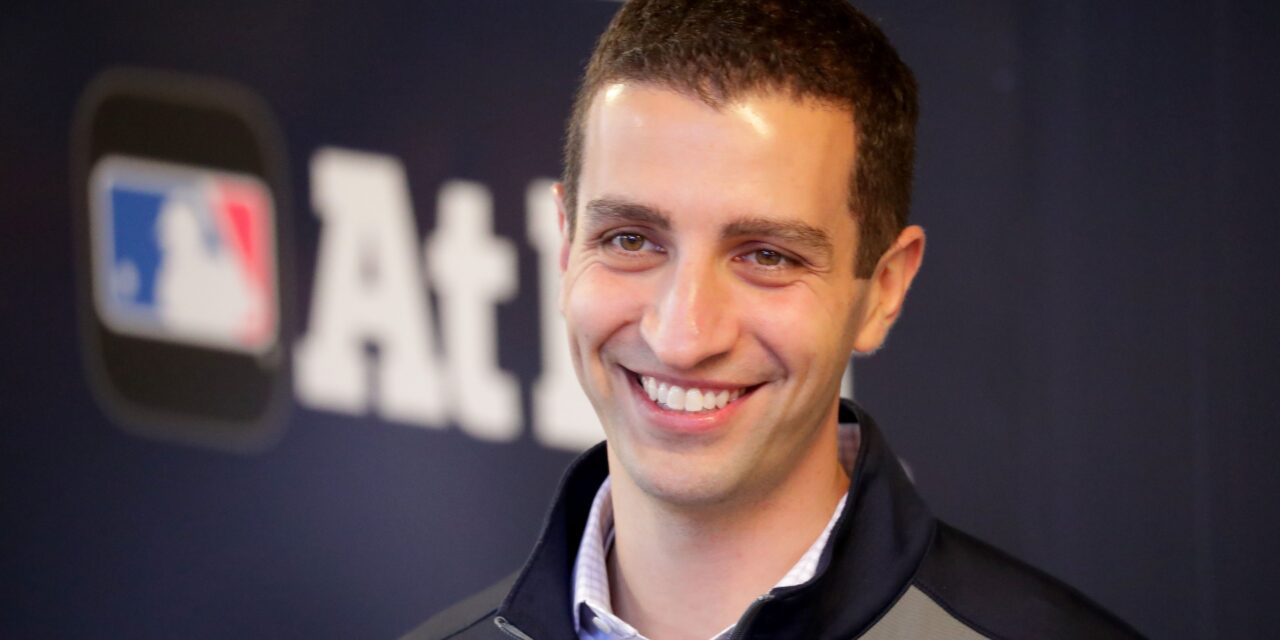The day is here. David Stearns begins his era as the New York Mets’ new president of baseball operations, marking a historic day for the franchise in many different ways.
Stearns is the first individual hired as president of baseball operations in team history. He’s also expected to be the guy to execute owner Steve Cohen’s vision for the Mets and lead an exciting and success-laden new era for the team. In many ways, it is an absolutely groundbreaking hire for a franchise that has long sought credible leadership at the very top of its baseball operations pyramid.
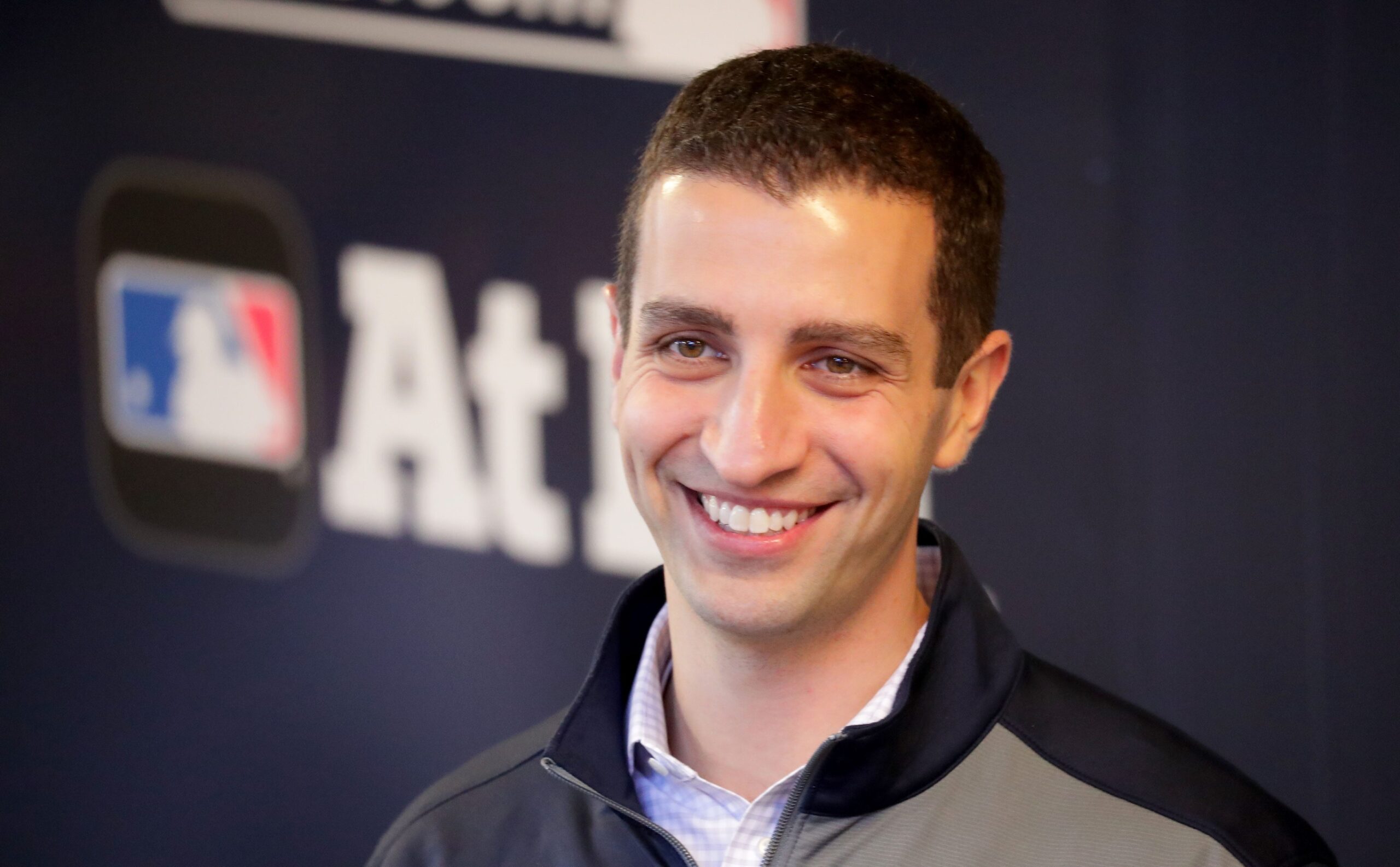
Photo by Mike De Sisti
The Mets plan to introduce Stearns during a press conference at noon ET on Monday. There were some fears that the Mets may have missed their window to announce Stearns officially. This is due to MLB’s desire for its teams to refrain from announcing any major news during the postseason, meaning Monday was the first and only day the Mets could have introduced Stearns.
That plan looked to be in doubt due to the possibility of the Marlins having to return to New York on Monday to complete the suspended game from Thursday. However, with Miami clinching a playoff berth on Saturday, that is now no longer required, and the Mets can proceed with introducing Stearns to the world.
With the Stearns regime officially underway, a new era of hope and promise awaits in Queens. The Mets are quickly closing the book on a hugely disappointing 2023 and instead will look forward to what they hope will be a bright future under the man they have long coveted for this role.
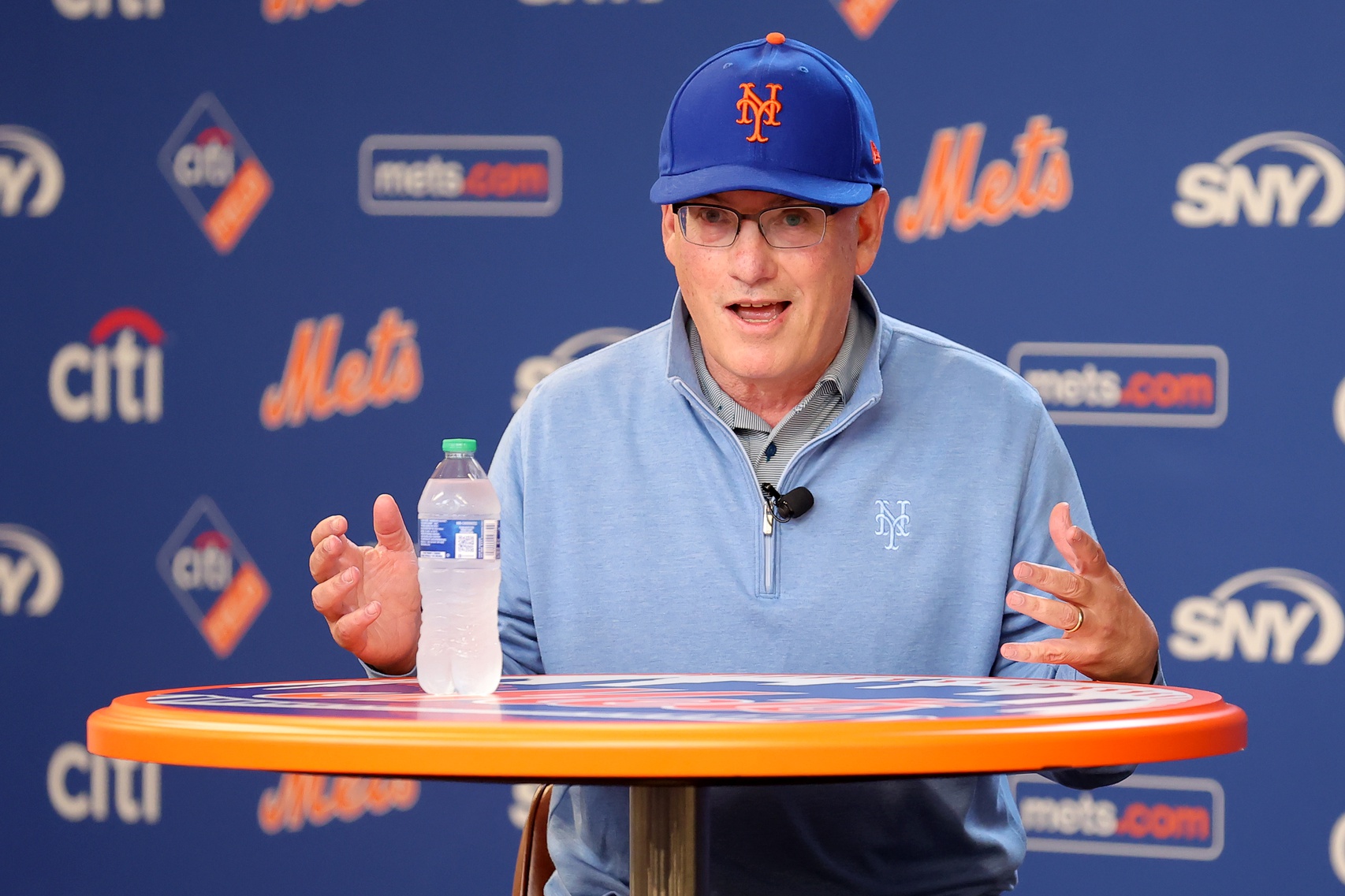
Steve Cohen. Mandatory Credit: Brad Penner-USA TODAY Sports
How Did The Franchise Get Here?
This hire was years in the making for owner Steve Cohen, who saw Stearns as his big white whale from the minute he took ownership of the Mets. While Stearns proved elusive at almost every turn, Cohen kept the faith, stayed the course and navigated murky and rough waters to get to reach this point.
Since buying the team in 2020, Cohen has held a specific and ambitious vision for the Mets. He wants to always build for tomorrow while competing for today. In other words, Cohen wants to build an elite and sustainable farm system that forms the core of any Mets team, then weaponize his significant wealth to supplement a nucleus of homegrown talent.
Cohen has tried to implement that strategy from day one, with the end goal of having a president who would oversee every aspect of baseball operations. Cohen had to be patient and, in doing so, brought on longtime baseball executive Sandy Alderson as a stopgap team president.
General manager Brodie van Wagenen was let go and replaced by Jared Porter, which started what has been a very rocky road for the front office. Just five weeks after the hire, Porter was fired following allegations of sexual harassment against a reporter in previous roles. Zack Scott took over the role for the 2021 season, but he, too, attracted controversy. In September 2021, Scott was charged with driving while intoxicated (DWI) and was swiftly placed on administrative leave that same month.
Still craving a competent figurehead to lead the baseball operations, Cohen enlisted the help of Alderson to search for a third general manager in a year. That hunt led them to Billy Eppler, who was responsible for bringing Shohei Ohtani to America while working as general manager for the Angels.
Operating under the knowledge that Cohen still planned to hire a president, Eppler oversaw some major moves. He was responsible for back-to-back blockbuster offseasons, using his owner’s never-ending wealth to sign the likes of Max Scherzer, Justin Verlander, Starling Marte, Mark Canha and Eduardo Escobar, among others. Eppler also elected for an easy win by hiring the hugely respected Buck Showalter as manager, giving the Mets a long-needed veteran leadership presence in both the dugout and clubhouse.
However, despite a 101-win season in 2022, the bloom was coming off the rose for Eppler midway through that year. He made a few deals that ended up aging poorly while failing to address a lack of power and the need for left-handed reinforcements in the bullpen.
Those flaws were major contributors to the Mets collapsing down the stretch, handing the NL East to the Atlanta Braves and then losing in the NL Wild Card to the San Diego Padres. Some may also view Eppler’s blueprint for the 2023 season poorly as well, relying on several aging talents in the rotation and failing to fully ensure a hedge in the bullpen after Edwin Díaz went down at the World Baseball Classic. This ultimately led to a major pivot at the trade deadline, with the Mets never really in contention for a postseason spot.
Granted, Eppler did a stellar job of flipping veterans for a slew of high-end prospects at the deadline, and he also hit a pair of home runs in the offseason after bringing Kodai Senga and José Quintana to Queens. Both starters were outstanding for the Mets all year. However, when looking at the full picture, it gets a bit murkier. Regardless, he is expected to remain in that role, but he will now get considerable help from above.
While all this was occurring, Cohen stepped up his pursuit of Stearns. After being denied permission to speak to Stearns on several occasions, Cohen preached patience, and that approach was rewarded shortly after the August 1 trade deadline. In his final year with the Brewers, Stearns was allowed to enter into talks with teams after that point, and things developed quickly between Stearns and the Mets.
After a lengthy and relentless pursuit, Cohen finally captured his whale, and it was reported on September 12 that Stearns would be the Mets’ president of baseball operations, receiving a five-year contract worth a staggering $10 million per season. This figure puts him in the same stratosphere as the Dodgers’ Andrew Freidman for the highest salary in baseball for a president of baseball operations.
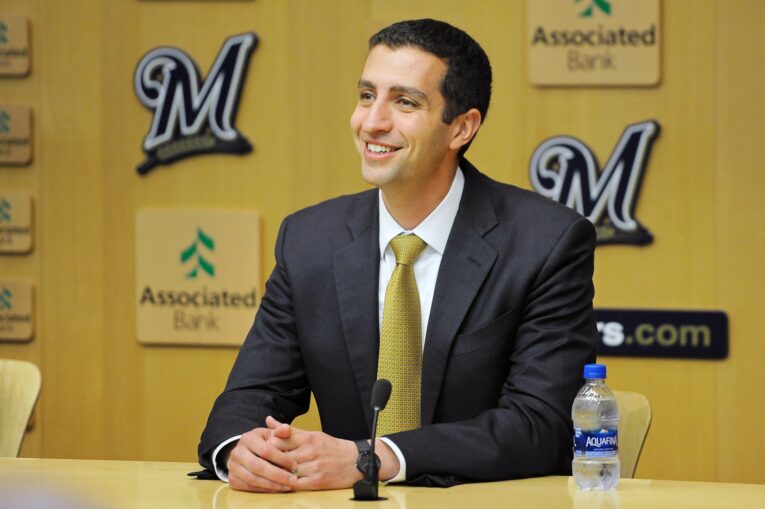
David Stearns.
David Stearns’ Stellar Resume
Before we take a look at the road ahead for Stearns and the Mets, first, we must go back in time to gain a better understanding of what we can expect from Stearns in Queens.
Born in New York – and growing up a diehard Mets’ fan – Stearns began his rapid ascension up the baseball food chain pretty early in his career. He graduated from Harvard, interned with the Pittsburgh Pirates, and then spent some time with the Mets before moving on to the major league office and Cleveland.
With his star on the rise, Stearns was named assistant general manager of the Houston Astros in 2012, where he helped lay the foundations for the consistent success that the team is enjoying today. While the Astros were on the cusp of morphing into legit contenders, Stearns was lured away by the Brewers to fill their general manager role in September 2015 as a 30-year-old. During this time, Stearns began his rapid trajectory to becoming one of baseball’s best and most exciting young minds.
The New York native took over a franchise that had been mired in mediocrity, always flirting with a .500 record and then sinking to a 68-94 record the year Stearns entered the building. However, from that point on, Milwaukee began to see tangible and incremental improvements year after year.
Stearns not only survived with limited resources, but he absolutely thrived and oversaw the win total increase to 73, 86, and then 96, respectively, over the following three years. Starting in 2018, the year they won the NL Central, the Brewers reached the postseason for a franchise record fourth-straight time. To put that accomplishment in context, that accounts for 50% of the team’s total playoff runs.
Stearns earned a rich reputation for constructing winning rosters with little to play with. Per Cot’s Baseball Contracts, the Brewers never had a top-half payroll in baseball during Stearns’ reign. That never held Stearns back, who pulled the trigger on a series of inspired moves.
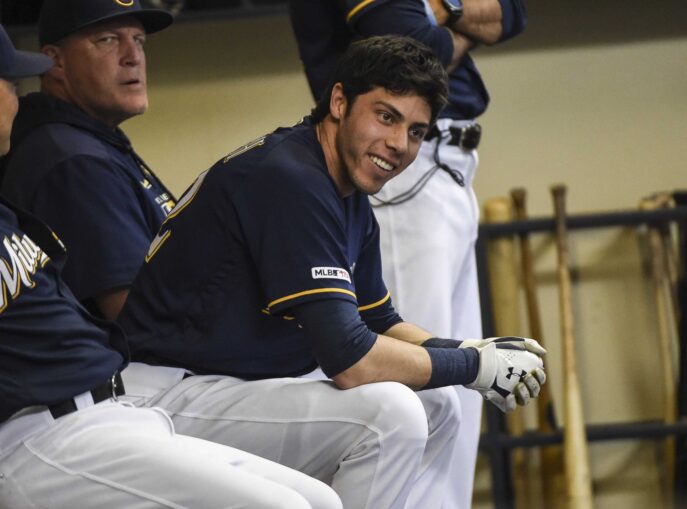
Christian Yelich.
He sent a package of prospects to the Miami Marlins for outfielder Christian Yelich in January 2018, immediately making Yelich a high-end cornerstone around which to build the rest of the franchise. Stearns also signed World Series champion Lorenzo Cain to a five-year contract later that day too, and both Cain and Yelich helped spark a major turnaround for Milwaukee.
In addition to proving adept at swinging for the fences and making blockbuster trades that improved a team instantly, Stearns continued to build for the future. He intricately rebuilt the Brewers’ farm system step-by-step, drafting and developing the likes of Corbin Burnes, Devin Williams and Brandon Woodruff. Stearns quickly became known as a pitching guru, investing in pitching labs and helping develop Burnes and Williams into major league starters. All while continuing to improve his roster in trades further, he acquired right-handed starter Freddy Peralta as part of a package in return for sending Adam Lind to Seattle. Peralta flourished in Milwaukee, becoming an All-Star and signing a five-year extension with the Brewers.
Stearns also showed his shrewd, highly advanced baseball smarts by flipping two prospects and a bad contract in Jackie Bradley Jr. to the Red Sox for Hunter Renfroe, who provided a big upgrade on offense. Struggling early in 2021, Stearns showed an aggressive side by sending two young pitchers to the Rays for shortstop Willy Adames, who became a major offensive contributor in Milwaukee. Throw in the Mike Moustakas deal at the 2018 trade deadline, too, which pushed the Brewers over the top and helped them clinch the NL Central Division crown over the Cubs.
The blueprint Stearns created while with the Brewers is one Cohen fell in love with. It focused on building an elite farm system, focusing on developing top-end pitching. Stearns then used his wealth of prospects in the thick of their sustained playoff run, pulling the trigger on deals for players that would help them win at the moment and in the future while not totally mortgaging the organization’s future. The fact Stearns rebuilt the farm system and oversaw four consecutive playoff appearances all while on a low payroll, made him the hot commodity he is today.
After being elevated to the position of president of baseball operations with the Brewers, Stearns eventually stepped down from that role in 2023 but remained in Milwaukee in an advisory capacity. That opened the door once more for Cohen and the Mets to throw one last Hail Mary in order to land their guy finally.
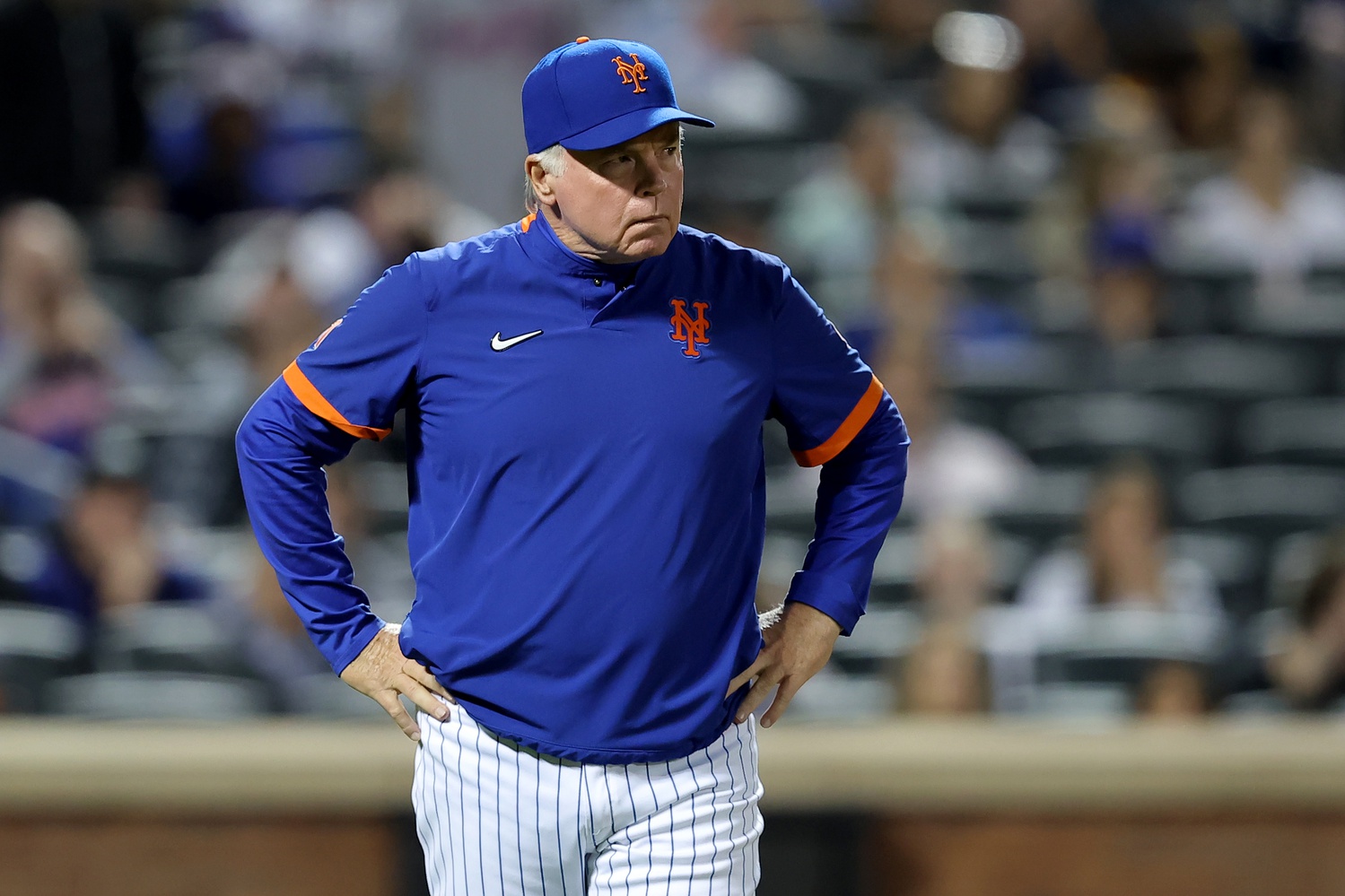
Buck Showalter. Brad Penner-USA TODAY Sports
What’s Next?
Cohen has long looked at the Dodgers and their blueprint with love hearts in his eyes. He’s long wanted somebody to emulate the job done by Andrew Friedman in Los Angeles, meshing analytics with the resources to be major players in free agency and at the trade deadline. That will afford Stearns the luxury of roster flexibility that he never had in Milwaukee due to their low payroll.
Thanks to his analytical chops and eye for pitching, Stearns will surely have a wishlist drawn up on what he wants to sink his teeth into with the Mets first. However, while there will be a long-term plan, there will also be a short-term plan and there are several pressing decisions already waiting for Stearns to tackle.
The first and perhaps most urgent job to tick off? Extending Pete Alonso. It appeared that the Mets’ silence on an extension led to a boatload of speculation and trade talk this past season. The fact that they were reportedly in talks with the Brewers – of all teams – at the trade deadline regarding potentially moving Alonso – is interesting, to say the least.
With Stearns, the new sheriff in town, the Alonso decision will be his to make and it is a headache that he will no doubt want to eradicate almost immediately. You don’t want this hanging over the franchise again in 2024. Plus, Alonso is on pace to become the best power hitter in the history of this franchise, and he’s coming off a third season in which he has hit 40 or more homers. That’s hugely impressive, and Alonso has also proven he is much more than a home run guy. He’s exactly the type of player and personality Stearns should be looking to build around for the long term.
The first of many crucial decisions came before Stearns was even officially announced. Stearns already decided on the future of Buck Showalter, who was under contract for the 2024 season. It was announced on Sunday, first by Buck himself, that the Mets and Showalter had parted company. In the words of Cohen, the organization is “heading in a new direction,” and Stearns will now be able to bring in his own guy and wipe the slate clean.
Outside of the Alonso decision, which will no doubt take precedence, Stearns will have a lengthy to-do list that will no doubt be never-ending. He needs to rebuild a starting rotation that struggled big time in 2023, and given the lack of real high-end arms in the farm system, Stearns may need to dip his toe in the free agency pool or be aggressive via trade to bolster the rotation.
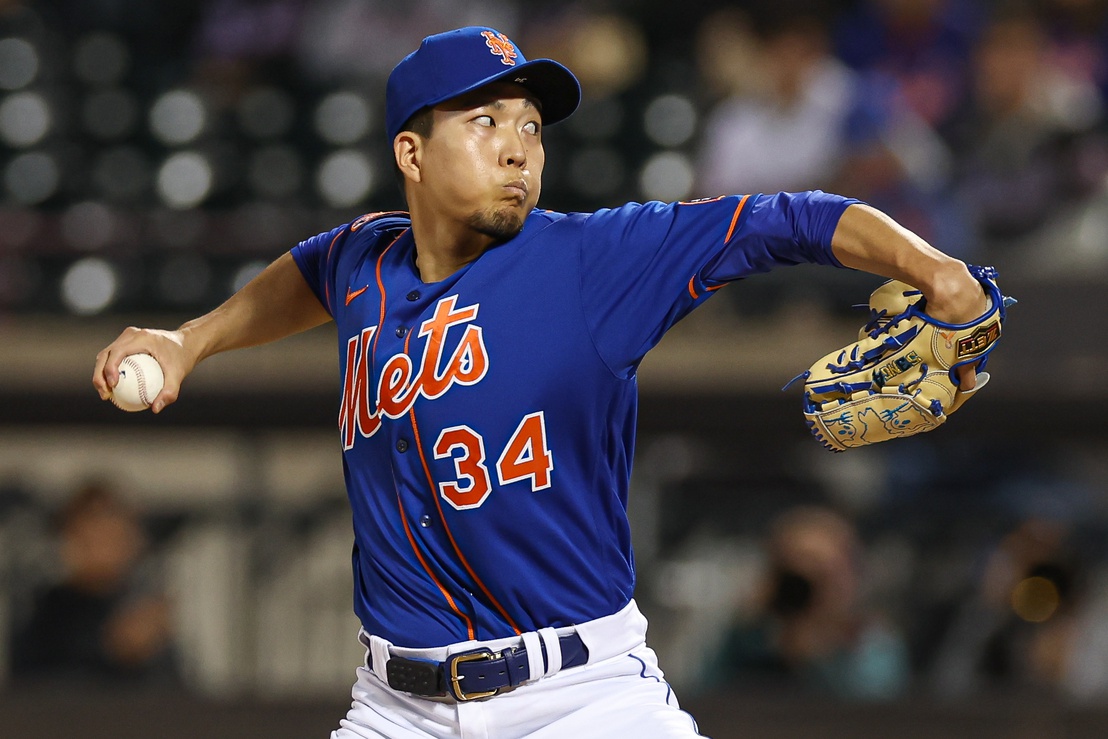
Kodai Senga. Vincent Carchietta-USA TODAY Sports
Kodai Senga, who could be the ace in 2024, and José Quintana are nice pieces to build around, but Stearns will have to focus on pitching if the Mets want to be even remotely competitive next year. There are attractive options out there, including Japanese ace Yoshinobu Yamamoto. Given his history of being ultra-aggressive in the trade market to improve his team, it wouldn’t be surprising to see Stearns return to his old team to acquire some pitching help. Corbin Burnes could be an intriguing option.
Outside of pitching, the Mets must collectively decide if they want to be all in on the Shohei Ohtani sweepstakes. If so, that will command a lot of resources, a lot of attention, and a lot of energy. It would also set the tone for Stearns’s early tenure in Queens.
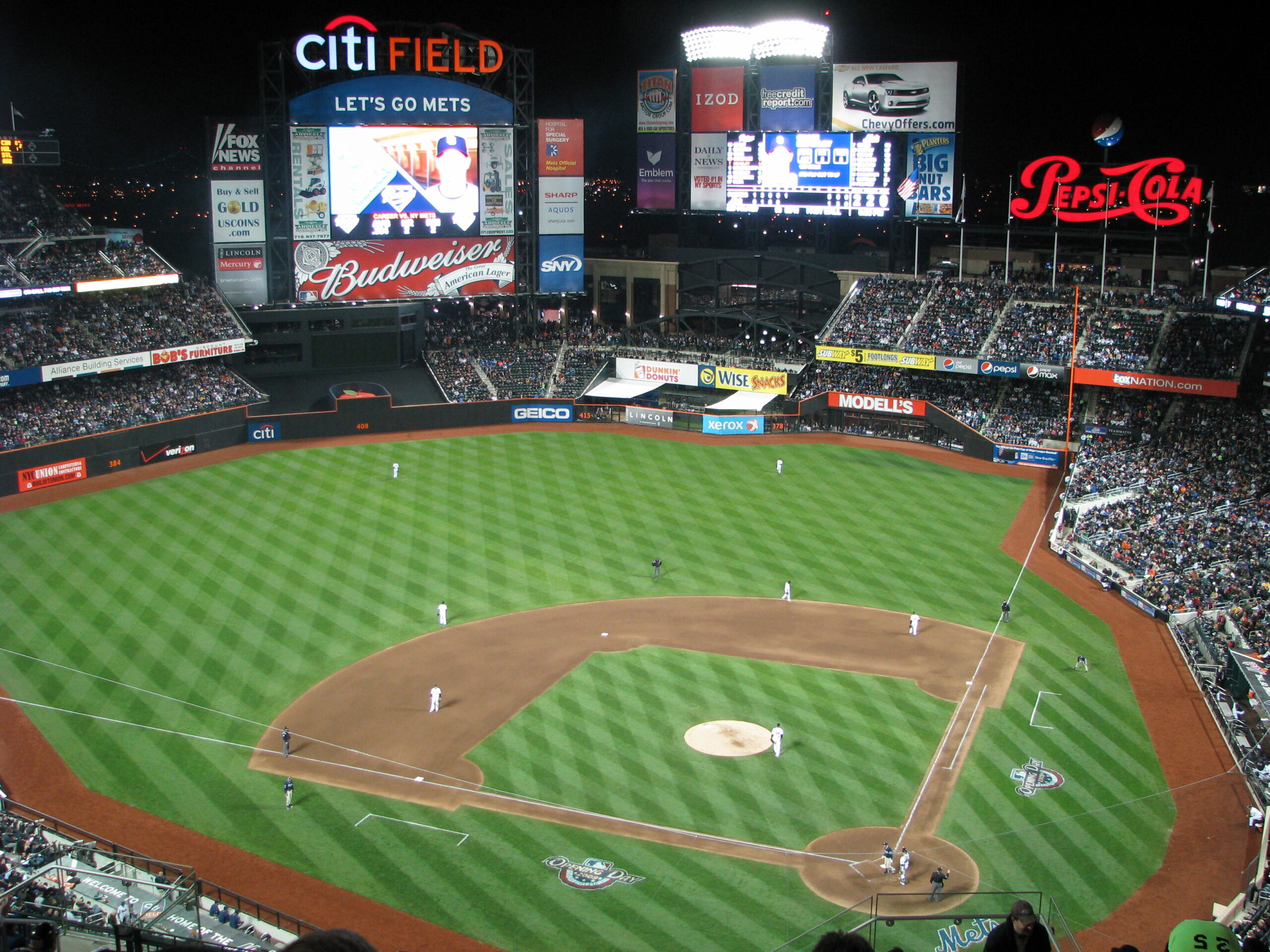
Final Thoughts
There is no doubt that Stearns is entering a much better situation with the Mets than he did with the Brewers back in 2015. Not only is the farm system vastly improved thanks to the influx of talent at the trade deadline, but Stearns will also have the luxury of being armed with a treasure chest of financial might. That certainly gives the new guy in town much more roster flexibility than he’s ever had.
Committing to a full-blown marriage to analytics, which is what Cohen has always desired, while having the ability to flex their financial muscles coupled with Stearns’ remarkable baseball mind, opens up a whole new world of opportunities for this franchise.
This is a new day for the New York Mets. One they have craved for a considerable amount of time now. David Stearns is their version of Andrew Friedman, and he instantly brings a plethora of credence and credibility to the baseball operations department. Stearns will be given a clean slate to work with; this is his blank canvas to paint a masterpiece in any way he sees fit. This hire can’t be seen as anything other than a game-changer for the Mets.
The David Stearns era is officially underway. And so is a brand new dawn for this franchise.


